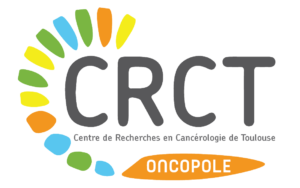
Importance of PI3K isoforms as major integrators of mechanotransduction.
Dr M.Delarue a Dr M.Di-Luoffo
Oncogenic cell signalling can be induced by genetic and epigenetic alterations, by biochemical molecules (such as environmental contaminants) but also by mechanical constraints. These are physical forces that are applied to the cells of the healthy organ or to the cancer cells.
When the physical force is applied perpendicular to the cell surface and is directed towards the part on which it acts, it is called “compressive stress”. It is usually described in the tens of kilopascals range and does not necessarily require cell adhesion. As cells grow and divide in a constrained space, they push against their environment to create space for their new biomass, this phenomenon is called ‘growth pressure’. The extracellular deposits of the surrounding cells also increase the compressive forces on the tumour cells, resulting in stroma-induced compressive stress.
Thus, these mechanical stresses evolve during carcinogenesis and possibly influence tumour progression by inducing cellular signals through a mechanism called mechanotransduction. We believe that PI3Ks are key elements of this mechanotransduction, the process of converting physical forces into intra- and extra-cellular biochemical signals.
The objective of axis 2 of the SigDYN team, also involving Dr. M. Delarue (main affiliation at LAAS-CNRS and secondary affiliation at CRCT, Toulouse) and Dr. M. Di-Luoffo, is to develop a new approach to the study of the mechanotransduction of PI3Ks in integrated cancer models. We are using and developing a novel and unique multidisciplinary expertise including transgenic models, orthotopic transplants, microfluidics, primary cultures, transcriptomic analysis at the cellular level on histological sections or on isolated cells coupled with bioinformatics and tumour imaging.
These methods are used to understand and target these autonomous and non-autonomous mechanisms of oncogenic pathways in pancreatic cancer.
We are currently applying our research to pancreatic cancer, where we have started to characterise the mechanical parameters and where mechano-therapies are promising therapeutic strategies.
Thus, the projects developed for the moment are the following:
- Mechanisms of resistance to compression during pancreatic carcinogenesis, activation of oncogenic pathways and therapeutic importance (led by Dr. M. Di-Luoffo).
- Elastography and ultrasound imaging of the heterogeneity of mechanical parameters of pancreatic tumours (led by N. Therville, in collaboration with Dr. P. Lefebvre, University of Lorraine, Nancy).
- Ex vivo modelling of physical parameters and cellular impacts (led by Dr. Z. BenMeriem, T. Mateo, LAAS-CNRS, Toulouse).
- Biomechanical stress & its impact on PI3Ks oncogenic signalling (led by S Aitbay).


